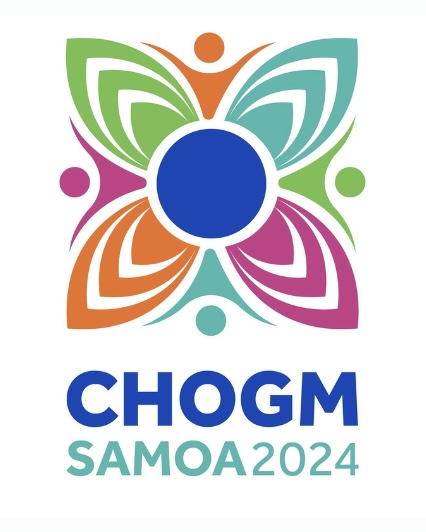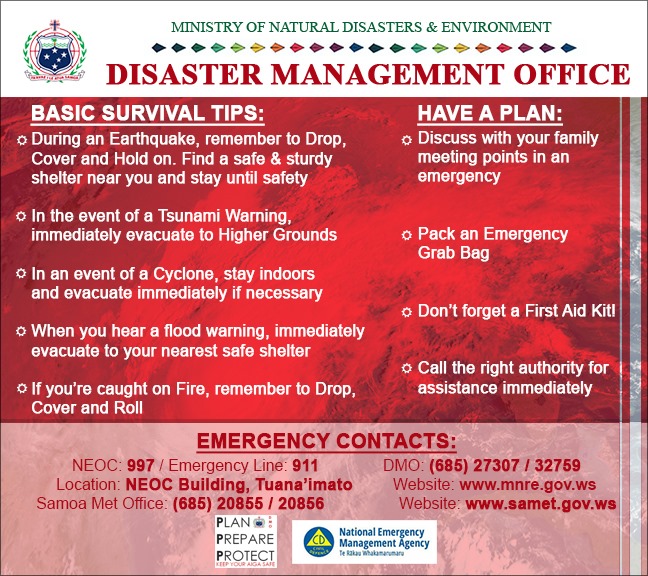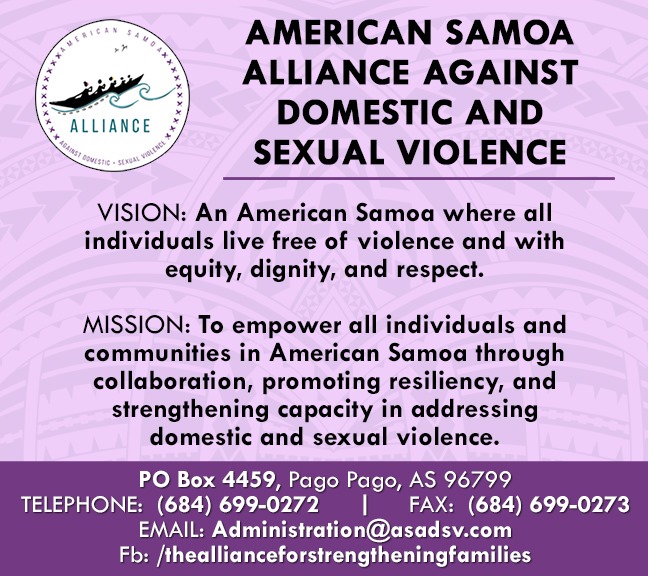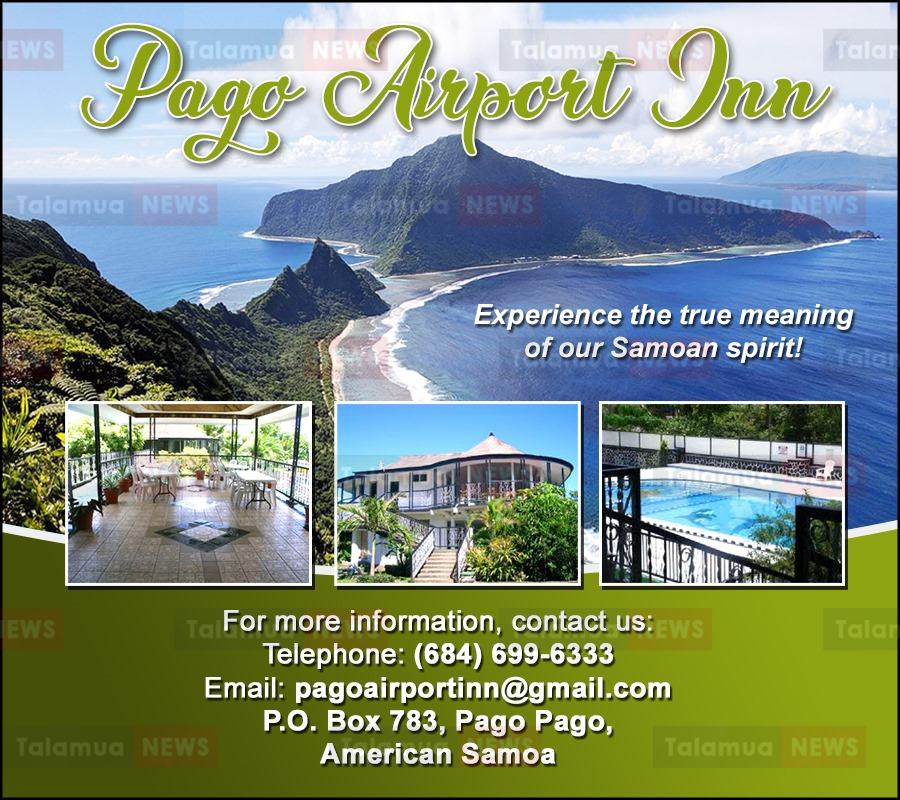Latest
VIEWPOINT: Debunking the HRPP and PM’s Propaganda
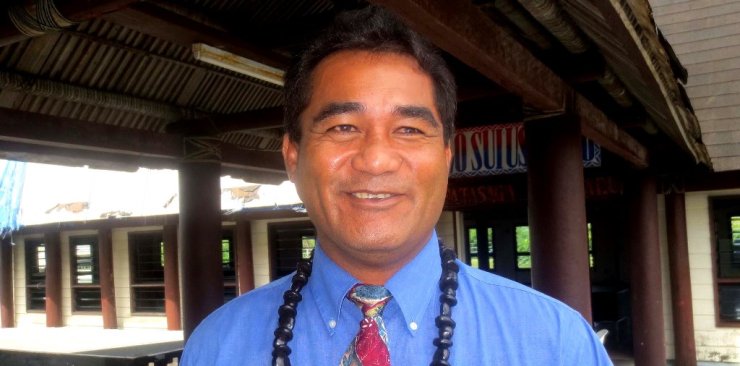
As I sit in my house and contemplate the many years of information provided by the PM and HRPP about the great things they have done for the country, I ponder why the previous leaders were not able to do what the current government has done, but why Samoa is in a worse condition now.
So, let me provide a few observations.
“O le atunu’u mativa elo”. “Leai gi kupe a le Malo”. “E le’i malamalama toeaiina i lea taimi.”
This is the espoused gospel the PM has preached which has been reiterated consistently over the last three decades that it has become accepted. Praise and gratitude for the PM’s work to take Samoa from a least developed country to a developing country is rampant within the communities without fully understanding the essence of these statements.
If the statements are examined thoroughly, it may confirm the validity of the statements or confirm years of orchestrated propaganda.
Prior to HRPP, Samoa gained its independence through the blood, sweat and tears of our forefathers who stood up to the colonial powers, firstly against the Americans, British and Germans (prior to 1889), then to the Germans (1889-1914), and later to NZ (1914-1961). Many Mau movements gained momentum as people resisted the imposition of foreign concepts. Impositions such as bowing to foreign leaders and foreign country taxation not only stifled the growth of our people but served to line the pockets of foreign governments.
When these foreign constructs were implemented, Samoans were taking lead to educate themselves on ways to better govern and develop our own people. When independence came in 1962, we had leaders establish a well-oiled and functioning government that was “Founded on God”, steadfast in Fa’aSamoa, and prioritized equal opportunity for all to improve their social and economic status. The goal for our leaders from the day of independence was to develop a country that will ease the burdens on its people.

Famous Samoan orator Namulauulu Lauaki (with staff) who was banished along with other Samoans by the Germans to the Marianas and never saw their homeland again
What I mean by this is, Samoa’s true leaders at the time emphasized government leading in social development that focused on the decentralization of opportunities, that strengthened district town centers, district hospitals, Komiti Tumamā, district agricultural offices, as well as establishing district schools. It also sought to strengthen and uplift the pulega lelei a nuu. The results of these were healthy people, flourishing communities and improving livelihoods from rural-based development.
Concurrently, Government set out to develop its national infrastructure with central functions that support the development such as roads (SPDC), electricity (EPC), telecommunications (Post Office) and others. To promote economic development, our REAL leaders at the time developed the country with the “Tagi I lima” mentality of using resources at the governments disposal to fund 70% of the national budget in the form the Western Samoa Trust Estates Corporation, the Copra Board, logging and fisheries development. The remaining funding needs came from employees and company taxes. Almost none came from government services as these were predominately free services compared to today. Aid and foreign loans were minimal with emphasis mostly on infrastructure and support services.
Government did not lean on its people to finance its developments through taxation in the form of VAGST, but view PAYE taxes from employees as an additional contribution. In this way, employees also looked forward to tax returns like most countries in the world implement to this day.
These aspirations and hard work of our people saw Samoa steadily improve in many areas, albeit in small increments, but at the pace its people were moving. This was done so Samoa can maintain its INDEPENDENCE from outsiders and more importantly from overburdening its own people.
Due to unfortunate global events of the late 1970’s such as the Global oil crisis that affected all countries, and some mismanagement decisions by the leaders of that time, Samoa’s development model hit a snag that continues to be highlighted by the PM regularly, but as false truths. In my view the basic infrastructure established at independence was still in place and should have been reinforced rather that totally dismantle as HRPP has done over the past 30 years.
So, I say to you, are the statements by the PM true or false. You DECIDE.
“Ua Manuia Samoa i le HRPP”, Ua tele atinae lelei ua faia e le HRPP”, “E le mafai e sesi vaega ona faia mea ua fai e le HRPP” , “Best lava Tuilaepa”
These are only some of the common adage at the heart of HRPP and its loyal supporters push for HRPP and Tuilaepa to continue at the helm for another 5 years. Now let me take you on a journey of self-discovery of some truths.
PSA Strike & new Era in Samoan Politics
The original HRPP leadership really did have Samoa’s best interest at heart when they, together with the support of the PSA strike of 1981, ushered in a new era in Samoa politics.

A newspaper photo of the PSA Strike in 1981 that ushered in HRPP as the government the following year
At the time, some very important decisions and reforms were made to adjust the country according to the new geopolitical world order and economic development approaches. These included the establishment of the Central Bank to stabilize the economy and eliminate corruption. Although successful in stabilising the economy, new kinks in the armour arose as the HRPP started taking a different approach to its management, thus leading to many of the original framers of the HRPP leaving it.
To date maybe only 3 of the original founders of the HRPP have descendants still with the Party while the rest have left. The question is why? The most common responses are: “it’s not the party our ancestors formed”, “it’s become Tuilaepa’s party not HRPP”, “it’s only focus is solidifying Tuilaepa power but not making the country better anymore.”
From within HRPP, these views are held by “disgruntled members” or as the fierce leader likes to call anyone opposing him “e valea”, “e leiloa se mea”. Quite frankly, this is the Tuilaepa Party rather HRPP. We have witnessed the change in tone, the altered approach and the firm dictatorial leadership style espoused by the current PM.
I continue to question: Is Samoa better with Tuilaepa’s leadership or not? What has Tuilaepa done to hook his followers?
- New Shiny Buildings. We have great new buildings that have been built with loans from predominantly bilateral partners like China since the major Banks like IMF, World Bank and ADB do not see these are worthy investments for government to loan. Why? Because these do not have returns for the government and people to justify using government funds as well as not generating returns that can pay such loans. One only needs to look around the world to see that most of big buildings are privately funded. If it is government-built, the building only commences when there are adequate funds. This is not the case for Samoa, and we are now saddled with loans for buildings with costs of teetering over ST$800m with no returns on investment to the government coffers. The burden of debt will be passed onto our children and generations thereafter to repay the HRPP’s desire to have big shiny buildings.

One of the Chinese funded and built buildings named after HRPPs leader and Tuilaepa’s mentor, Tofilau Eti Alesana
- New Roads. These are predominantly funded by Development Banks such as ADB, IMF and WB as they do facilitate improvement of livelihood and economic developments. Most governments in power world-wide improve roadworks. It is not an original idea for HRPP to claim this. Any government would have a responsibility to maintain and improve road works for their country. As for the process of tendering contracts, it is important to question if there is transparency of prices or are the tenders inflated to benefit a few individuals for personal gain. I err on the side of possible corrupt practices at play since we have enough evidence from other developments.
- Better Airports. An interesting thought especially that since HRPP had come to power in the early 1980’s, we’ve had a bankrupt airline, another one continually being resuscitated with injection of government funds. Our domestic airports are in a see-saw with closures and reopening while some have not seen a plane in long time. While all these are happening, the people are saddle with paying for the changes even though we get at most 20 flights per week compared to a country like Fiji that has that many flights in one day. So, you ask, why do we need to continually build new airports, let alone do major upgrades to the airports we can’t seem to get much use from them. Shouldn’t funds be directed to where better returns can be earned or improve people’s lives. The income from the airports barely meet its maintenance cost but definitely cannot make payments of the loans it now has, so you the people and your grandchildren will suffer with payments of another botched planning.
- Better Electricity and Water Supply. Another of the important infrastructure that is a must for any government in power, so it is a no-brainer that they will be done over time by any government of the day. My issue with these utility companies is Tuilaepa’s Party for over 30 years has not made a real effort to improve its efficiency so it can really provide the fa’amamā avega to our people. So much lost power and water leakage continues over these many years, all the while the people are being made to pay for the inefficiency of the operations. It is not right for a person to pay $1 per unit for electricity or water when the operation of these utilities shows that at least 20-30% of the produced power or supplied water is lost. In my opinion, we should only be paying 70sene, but the extra 30sene is being used to cover the utilities inefficiency, thus continuing to plunder the hard-earned cash people fork out.
- Land. This is touchy issue especially when it comes to what is now referred as government lands. These lands were originally transferred to the Samoan government from NZ government during independence as our leaders at the time saw the value of WSTEC in providing for the country through its farm operations. Unfortunately, due to bad management decisions that included HRPP in the later years, this once flourishing government asset is now defunct. Most of these lands were transferred to what is now a cash cow that doesn’t seem to make its way back into the government coffers. With a minimum of 1000 acres of land sold (Falelauniu, Vaitele, and Vailele) at conservatively $80,000 per acre, Samoa government should have received at least $80,000,000, but by my estimates, it should be more than $200million. Many more lands are leased as well which creates another income source. Now you figure out if you’ve ever seen such an amount. STEC has become another white elephant that continues to be resuscitated with government funds despite its obvious deficiencies.
- Good Governance – Pulega lelei. Now this just about the most laughable argument ever given on why Tuilaepa’s party should continue. We’ve seen and heard many incidences of issuing contracts despite conflict of interests, blatant misuse of government funds for personal use, hiring and firing of personnel depending on their support to the executive, politicizing of government positions such as CEO, ACEOs and now sui o nuu. The real kicker has been only doing development initiatives such as roads, electricity, water, schools, and the likes for villages and districts that support the executive. Now that campaign season is upon us, you will see new roads and likes being done to entice voters. Whether you like it or not, it has been voiced openly that alu I le malo e fai ai tatou auala ma atinae a le nuu ma le itumalo. How sad is it that our own people to view the executive as such, when numerous national and sector plans produced and identified critical areas of the country that need assistance but do not get it due to favouritism fa’a-itū-‘au. For all its loud noises and bragging by HRPP, this is what is comes down to, scratch my back and ill scratch yours. IF you still refuse to believe this, drive around the country and you will new roads and some in dilapidated conditions that were built for campaign purposes while some villages in real need still don’t have proper roads.
- Socially, our recent experience of the measles, and COVD-19 State of Emergencies in Samoa, are some of the stark examples of the centralization process hailed by the PM that saw the national funding discontinued for many of the district hospital services, and support for village-based Komiti Tumamā

Representatives of the Women’s Committees gathered three days before Christmas 2020 to recieve $1.3m tala as a Stimulus Package, largely seen as “election sweets.”
. I’m at a real loss to the continued denial by the leadership of its failures in the measles epidemic and the over compensation we now get with the COVD-19 non-existence in Samoa.
As espoused by the ‘fearless’ leader, his leadership is why Samoa is now a Malo tau atia’e developing country. It’s true that we are now a developing country, but look deeper into the structure of the economy and you will see the gaping holes that I’ve always wondered why organisations such as WB, IMF and ADB, let alone the bilateral partners don’t see it. I suspect they do know but have kept quite as they need support in other international issues. So, let’s dive in using simple explanation: (using 2018-2019 figures).
- Samoa has a national debt from external loans that amount more than USD$434m or more than ST $1.1 billion, having ballooned from USD$193 in 2008. In layman’s terms, every Samoans living in-country owed $2722 in 2008 to overseas creditors and in 2018, that figure now stands at around $5700. And what do you have to show for owing this money? Nice buildings with no returns on investment, unused airports and wharves, defunct and barely surviving airlines but a beautiful township. Furthermore, these astronomical loans are being passed down to the next governments and generations to pay off, hindering their chances of doing something themselves to better the country.
- The national economy or GDP is estimated to be around USD$830m or so we have been shown. Truth be told, this high level of GDP breaks down to approximately in one tala terms as being, 10 sene is earned from exports, around 30 sene is from industries and other transactions, while 35 sene is from tourists and another 25 sene from remittances. Of the tourism earnings, it is likely 70% or 30 sene is from Samoans visiting families and bringing foreign cash with them. So, Samoa’s diaspora contributes in true value close to 60 sene, the private sector and farmers contribute around 30sene while government pitches in less than 10 sene through its services and loans.
- Looking at how the government earns the money it spends on our development, let’s delve into its simple analogy. For every talā earned by the government, 25 sene is from VAGST that you pay for your goods and services; 45 sene comes from other taxations such as PAYE, company taxes, excise and import duties; 13 sene comes from your payments of government services while the remaining 27 comes from External Aid and government loans. Compare this to when Samoa became independent, close to 70 sene was financed by government bodies such as WSTEC, and some nominal taxes on the populous. Therefore, you can undoubtedly see that it is you in person that pays for the majority of what government plays around with.
- So how does government spend the funds you give them; 18-20sene it to pay loans (debt servicing), while 80 sene is spent on government services. The interesting thing of note is that, around 60 sene is spent on salaries and wages while very minimal is used for actual development programs. The real development of the country therefore is actually mostly financed by loans, and external grants. Remember, all the programs that come to your village, including building schools, hospitals, agricultural and farming stimulus, and environment related stimulus all come with donor logos. How does this affect you in person? If and when these external assistance and loans dry out, we will be left with a government that only pays people to turn up to work but can’t implement much with no resources.
- Now let’s look at some of the development endeavours that HRPP have embarked on in the past 30 years to see if they have really made the country better. Agriculture has seen oodles of money thrown its way to revive but it’s teetering around 10% of exports for 30 years. So, it should be considered a major failure on HRPP, since prior to HRPP, exports amounted for around 30-50% of GDP.
- The tourism industry that is usually flagged as a major success story to overseas punters. But REALLY? After 30 years of pouring money into it, we still have less than 70,000 bonafide tourists; our hotels and hospitality industry are operating in some areas at less than 10% occupancy. So, I consider this another major bust since in my view, we should be in over 150,000 bonafide tourists annually but not less than half it is now.
- Our infrastructure is the envy of our Pacific Island neighbours with nice roads, water and electricity reaching close to 90% of the country despite the high percentage of leakage and losses, wharves and airports are a myth with some operating and some in total dilapidated condition, all at high costs to the country and at unsustainable levels
It is shameful for Tuilaepa as a PM to continually brag and profess publicly, “se’i tau su’e atu ni tupe mo tatou”, “pamu fa’atamali’i” when referring and extending a handout to overseas donors for money to develop Samoa.
Are we now a DEPENDENT state and have lost of INDEPENDENCE? You be the judge.
These are only some of the reasons why I for one am not as confident that another 5 years of HRPP is the answer for Samoa. Their time is ending and it is time for change. Samoa must go in a new direction that suits the current geopolitical world order. So, make your decision whether you value your current job, or perks from HRPP, even though according to the PM, you are laui’a today, but you may be a vale or pua’aelo tomorrow when you become expendable to his needs. As for me and my house, we Stand for Change. We stand with FAST.
Ma le fa’aaloalo lava.
*Toeolesulusulu Cedric Pose Salesa Schuster is an Environmentalist, Consultant, former Member of Parliament and is a candidate for the upcoming general election for the A’ana Alofi No.4. Constituency.



